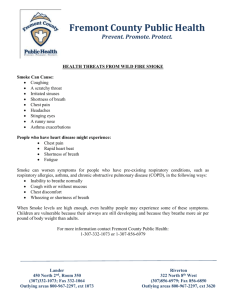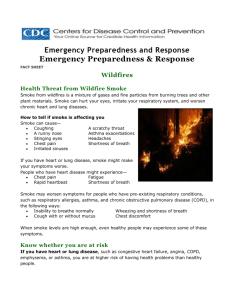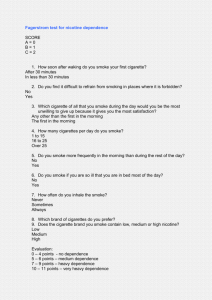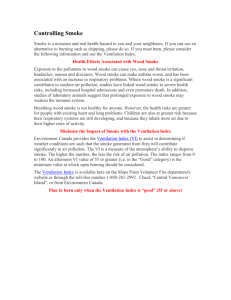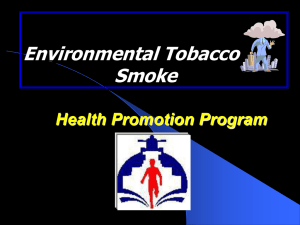Smoke Fact Sheet
advertisement
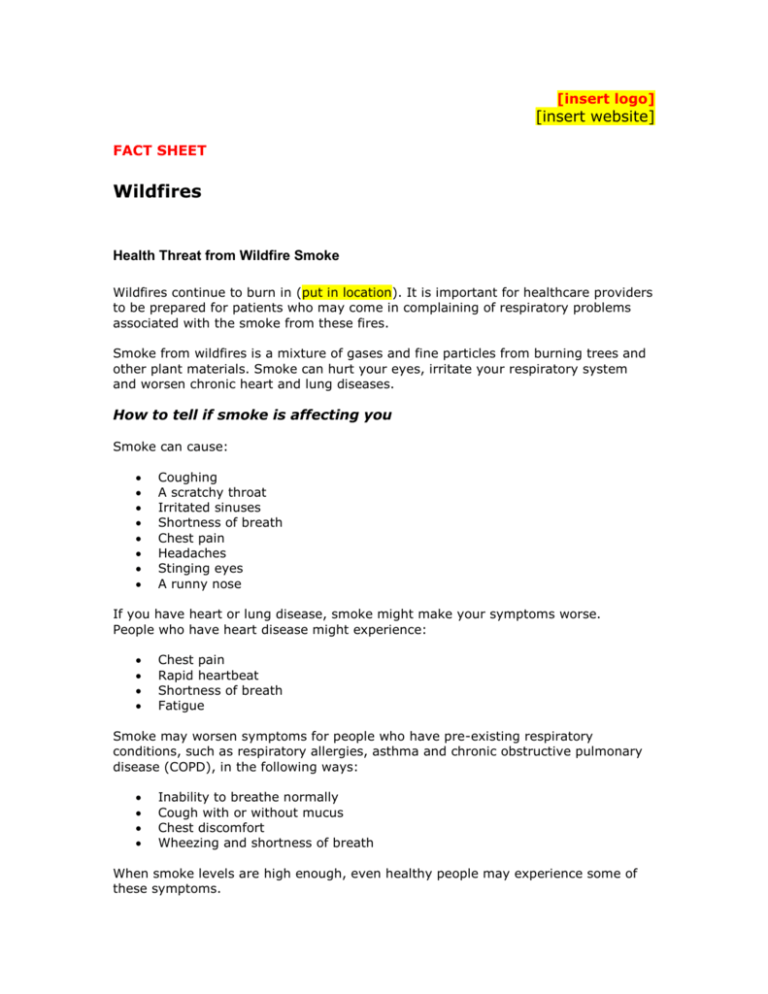
[insert logo] [insert website] FACT SHEET Wildfires Health Threat from Wildfire Smoke Wildfires continue to burn in (put in location). It is important for healthcare providers to be prepared for patients who may come in complaining of respiratory problems associated with the smoke from these fires. Smoke from wildfires is a mixture of gases and fine particles from burning trees and other plant materials. Smoke can hurt your eyes, irritate your respiratory system and worsen chronic heart and lung diseases. How to tell if smoke is affecting you Smoke can cause: Coughing A scratchy throat Irritated sinuses Shortness of breath Chest pain Headaches Stinging eyes A runny nose If you have heart or lung disease, smoke might make your symptoms worse. People who have heart disease might experience: Chest pain Rapid heartbeat Shortness of breath Fatigue Smoke may worsen symptoms for people who have pre-existing respiratory conditions, such as respiratory allergies, asthma and chronic obstructive pulmonary disease (COPD), in the following ways: Inability to breathe normally Cough with or without mucus Chest discomfort Wheezing and shortness of breath When smoke levels are high enough, even healthy people may experience some of these symptoms. Know whether you are at risk Those at risk include: If you have heart or lung disease, such as congestive heart failure, angina, COPD, emphysema, or asthma, you are at higher risk of having health problems than healthy people. Older adults are more likely to be affected by smoke, possibly because they are more likely to have heart or lung diseases than younger people. Children are more likely to be affected by health threats from smoke because their airways are still developing and because they breathe more air per pound of body weight than adults. Children also are more likely to be active outdoors. Protect yourself Stay inside with windows and doors shut. Use the recycle or re-circulate mode on the air conditioner in your home or car. If you do not have an air conditioner and if it is too warm to stay inside with the windows closed, seek shelter elsewhere. Avoid cooking and vacuuming, which can increase pollutants indoors. Avoid physical exertion. Asthmatics should follow their asthma management plan. Keep at least a five-day supply of medication on hand. Contact your doctor if you have symptoms such as chest pain, chest tightness, shortness of breath, or severe fatigue. This is important for not only for people with chronic lung or heart disease, but also for individuals who have not been previously diagnosed with such illnesses. Smoke can “unmask” or produce symptoms of such diseases. Keep airways moist by drinking lots of water. Breathing through a warm, wet washcloth can also help relieve dryness. A fitted mask (OSHA N95) can be used to reduce smoke exposure unless it interferes with breathing. A dust mask is generally ineffective with smoke.

